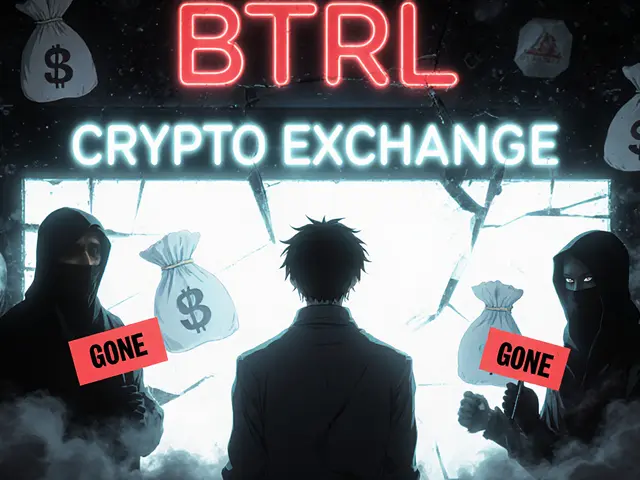HERA Token Value Calculator
Estimated Results
Your HERA balance is estimated to yield:
- Fee Savings: $0.00 per month
- Dividend Earnings: $0.00 per month
- Total Potential Earnings: $0.00 per month
Note: These calculations are estimates based on current market data and may vary depending on actual protocol usage and dividend distributions.
The HERA token provides:
- Fee discounts for using Hera Finance DEX aggregator
- Eligibility for dividend payouts from protocol revenue
- Governance rights for future roadmap decisions
Current market data:
- Price: $0.84
- All-Time High: $10.72
- 24h Volume: $77,100
- Exchange Listings: 4
Ever wondered what Hera Finance actually does in the chaotic world of DeFi? In plain terms, it’s an AI‑powered multichain DEX aggregator that promises to find the best swap routes across dozens of blockchains. If you’re curious about how it works, why the HERA token matters, and whether it’s worth a glance, this guide breaks everything down without the jargon.
Quick Takeaways
- Hera Finance is a decentralized exchange aggregator that uses AI to chase the cheapest trade routes across multiple chains.
- The native utility token, HERA (HERA token), powers fee discounts and a dividend‑type revenue model.
- Its flagship technology - the Pathfinder core - runs on both CPU and GPU, allowing on‑chain data crunching for faster swaps.
- Market data shows a steep drop from an all‑time high of $10.72 to under $1, with daily volume under $80k and limited exchange listings.
- Competing against giants like 1inch, Paraswap and Matcha, Hera Finance still needs to prove liquidity and adoption.
What Is Hera Finance?
Hera Finance is an AI‑driven multichain decentralized exchange (DEX) aggregator that launched with the goal of delivering the most efficient token‑swap routes across a wide range of blockchain networks. The platform advertises a “fair dividend” model that redistributes a portion of protocol revenue to HERA holders, aiming for a sustainable income stream. While its official narrative focuses on the Andromeda Network, the architecture is built to be chain‑agnostic, meaning it can integrate with any blockchain that supports smart contracts.
Core Technology - The Pathfinder Engine
The heart of Hera Finance is the Pathfinder core. This engine uses both CPU and GPU processing power to scan liquidity pools, calculate optimal paths, and push the execution directly onto‑chain. Key technical traits include:
- Multi‑chain extensibility: Not limited to EVM‑compatible chains; the codebase can be adapted for non‑EVM architectures.
- Dynamic multihop routing that splits large trades into smaller slices to avoid slippage.
- Calldata optimization that trims unnecessary data, reducing gas costs.
- Neural tick ranges that leverage machine‑learning predictions for tighter price bands.
- Automatic load balancing across distributed nodes, ensuring consistent performance during high‑traffic periods.
The upcoming “Interchain” feature promises true cross‑chain swaps in a single transaction, a capability that could leapfrog the two‑step bridge approach used by many competitors.

Understanding the HERA Token
The HERA token (symbol HERA) lives on the Ethereum network at contract address 0x6F05709bc91Bad933346F9E159f0D3FdBc2c9DCE. Its primary roles are:
- Fee discounts for users routing trades through the Hera platform.
- Eligibility for periodic dividend payouts drawn from protocol revenue.
- Governance rights that let holders vote on roadmap priorities (though exact mechanisms are still being fleshed out).
Tokenomics details are sparse; the whitepaper mentions a “sustainable dividend model” but stops short of publishing exact percentages or distribution schedules. This opacity is a red flag for investors who prefer transparent monetary policy.
Market Performance Snapshot (October2025)
Price data is all over the place, but the most recent figures are:
- Current price: $0.84 (CoinGecko)
- 24‑hour volume: $77,100
- All‑time high: $10.72 (late2022)
- Market rank: around #7,000 by market cap
Liquidity is heavily concentrated in the HERA/ETH pair, which accounts for roughly 99% of all trade volume. The token trades on just four platforms: Bilaxy, Uniswapv2, Netswap and HerculesV3. Such limited exposure makes price discovery unreliable and can cause sharp swings on modest trade sizes.
How Hera Finance Stacks Up Against Other DEX Aggregators
| Feature | Hera Finance | 1inch | Paraswap | Matcha |
|---|---|---|---|---|
| Multi‑chain support | All‑chain (planned Interchain) | Ethereum + BSC + Polygon | Ethereum + BSC + Polygon + Avalanche | Ethereum + Polygon + Fantom |
| AI‑driven routing | Pathfinder Core (CPU+GPU) | Statistical optimizer | Heuristic engine | Rule‑based engine |
| Liquidity depth | Low (single‑pair dominance) | High (major pools) | Medium‑high | Medium |
| Token utility | Fee discounts & dividends | 1INCH token for governance | PARA token for fee rebates | No native token |
| Exchange listings | 4 (incl. Uniswap) | 30+ major DEX & CEX | 20+ platforms | 15+ platforms |
From the table it’s clear that Hera Finance offers a novel AI layer but still lags behind established aggregators in liquidity, token adoption, and exchange coverage.

Risks and Challenges
Any new DeFi protocol faces a checklist of hurdles, and Hera Finance is no exception:
- Liquidity scarcity: With most volume stuck in HERA/ETH, large trades can cause slippage or fail altogether.
- Opaque tokenomics: The dividend model is described but not quantified, leaving investors guessing about real returns.
- Technical ambition vs. resources: Building a truly chain‑agnostic engine and the Interchain feature requires continuous development budget and security audits.
- Competitive pressure: 1inch, Paraswap and Matcha already have deep integrations and brand trust.
- Data reliability: Conflicting market cap numbers and low reporting volume make price discovery risky.
If any of these pain points aren’t addressed, the token could remain a niche play rather than a mainstream DeFi staple.
Future Outlook
The biggest upside for Hera Finance lies in successfully launching Interchain swaps. A seamless, single‑transaction cross‑chain trade would be a game‑changer for users who currently juggle bridges and separate approvals. Should the team deliver on that promise, they could attract liquidity providers looking for a more efficient way to aggregate across chains.
On the flip side, the project must prove that the AI‑driven routing actually saves users money compared to existing aggregators. Transparent reporting of dividend payouts and clearer governance structures would also boost confidence among HERA holders.
In short, Hera Finance is a promising concept with cutting‑edge tech, but its real‑world impact hinges on execution, liquidity growth, and community building.
Frequently Asked Questions
What is the main purpose of Hera Finance?
Hera Finance aims to be a multichain DEX aggregator that uses AI to find the cheapest swap routes across many blockchains, while rewarding HERA token holders with fee discounts and dividend‑style payouts.
How does the HERA token generate revenue for holders?
A portion of the protocol’s swap fees is allocated to a dividend pool. The exact percentage isn’t published, but the pool is distributed proportionally to HERA holders at regular intervals.
Can I trade HERA on centralized exchanges?
As of October2025, HERA is listed on four platforms-Bilaxy, Uniswapv2, Netswap and HerculesV3. No major CEX currently supports the token.
What is the Interchain functionality?
Interchain is a planned feature that will let users execute a cross‑chain swap in a single transaction, bypassing the traditional two‑step bridge process.
Is Hera Finance safe to use?
The platform is open‑source and runs on smart contracts, but limited audits and the low liquidity pool increase risk. Users should start with small trades and keep an eye on contract updates.
Whether you’re a trader looking for better rates or a holder curious about dividend prospects, understanding Hera Finance’s strengths and gaps will help you decide if the project fits your DeFi strategy.








Jessica Smith
October 7, 2025 AT 07:40Petrina Baldwin
October 7, 2025 AT 22:26Ralph Nicolay
October 8, 2025 AT 18:03sundar M
October 9, 2025 AT 11:55Nick Carey
October 9, 2025 AT 14:02Sonu Singh
October 9, 2025 AT 19:50Peter Schwalm
October 10, 2025 AT 16:25Alex Horville
October 10, 2025 AT 22:35Marianne Sivertsen
October 11, 2025 AT 17:55Shruti rana Rana
October 11, 2025 AT 18:14Stephanie Alya
October 12, 2025 AT 05:24olufunmi ajibade
October 12, 2025 AT 10:49